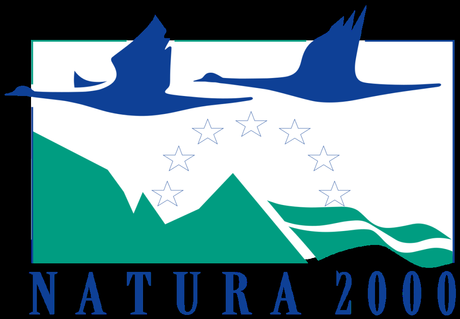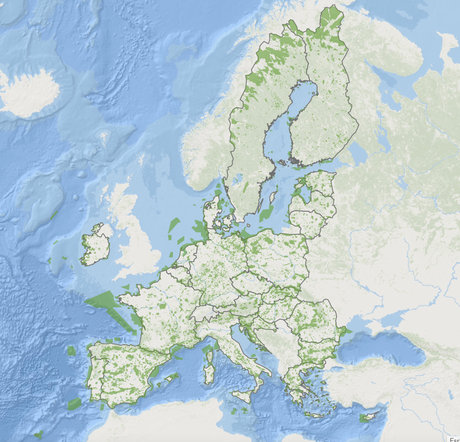What is Natura 2000?
Natura 2000 is a vast network that spans across all 27 EU countries, encompassing both land and sea. Its primary objective is to safeguard the long-term survival of Europe’s most valuable and vulnerable species and habitats listed under the Birds Directive and the Habitats Directive. Unlike a system of strict nature reserves, Natura 2000 embraces a holistic approach that emphasizes sustainable management and collaboration between people and nature. While strictly protected areas exist within the network, most of the land remains privately owned, ensuring a balance between conservation and economic viability.

Unveiling the Benefits:
The advantages offered by the Natura 2000 network far outweigh the costs associated with its establishment. The ecosystem services provided by Natura 2000 sites are estimated to contribute between 200 and 300 billion EUR per year, accounting for approximately 1.7-2.5% of the EU GDP. These sites play a crucial role in preserving insect pollination, a vital component of food security, and provide services such as clean water provision, air purification, climate change mitigation and adaptation, as well as opportunities for tourism and recreation. In fact, the Natura 2000 network supports between 4.5 and 8 million full-time jobs in the tourism and recreation sectors.
Differentiating Natura 2000 from National Nature Reserves and Parks:
Natura 2000 sites are specifically designated areas within the EU focused on the protection of endangered species and habitat types of European importance. With around 2000 species and 230 habitat types, these sites offer incredible biodiversity. In contrast, national nature reserves, national parks, and other protected sites are established under national or regional laws, which can vary across countries. While there may be overlap between these sites and Natura 2000 areas, the latter are uniquely designed to preserve Europe’s most critical ecological treasures.
The Extent and Diversity of Natura 2000:

Covering over 27,000 sites and a total area of about 1,150,000 km², the Natura 2000 network represents approximately 18% of the EU’s total land surface, encompassing both terrestrial and marine environments. The land coverage varies from country to country, reflecting the abundance of natural and semi-natural habitats within each region. The Mediterranean, Continental, and Alpine regions boast a higher proportion of protected habitat types and species compared to the Atlantic region. Additionally, Central and Eastern European Member States harbor extensive natural and semi-natural habitats, including populations of large carnivores.
Ecosystems within Natura 2000:
Natura 2000 sites comprise diverse ecosystems, including terrestrial, freshwater, and marine environments. Forest ecosystems dominate approximately 50% of the network’s surface, while agro ecosystems, such as pastureland and agricultural areas, cover approximately 40%. Efforts are also underway to designate marine sites that ensure the conservation of marine habitat types and species protected by the Habitats and Birds Directives, with almost 6% of the EU marine area already included in the Natura 2000 network.
Balancing Economic Activities and Conservation:
Contrary to common misconceptions, Natura 2000 does not necessitate the cessation of all economic activities within designated sites. Instead, it recognizes the integral role of human activities in maintaining a harmonious coexistence with nature. While adaptations or changes may be required
What does Natura 2000 mean for hikers?
- Unparalleled Natural Beauty: Natura 2000 sites encompass some of Europe’s most breathtaking and diverse landscapes, including pristine forests, stunning coastlines, majestic mountains, and tranquil wetlands. Hikers have the opportunity to explore these remarkable areas and immerse themselves in the beauty of untouched nature.
- Unique Wildlife Encounters: Natura 2000 sites are home to a multitude of rare and threatened species. Hikers may encounter fascinating wildlife along their trails, such as elusive birds, rare butterflies, diverse flora, and even iconic mammals like European lynx or brown bears. These encounters provide hikers with unforgettable experiences and a chance to appreciate the importance of biodiversity conservation.
- Varied Trail Options: The Natura 2000 network offers a wide range of hiking trails suitable for all levels of expertise. Whether you’re an avid trekker seeking challenging mountain ascents or a casual hiker looking for serene walks amidst beautiful landscapes, Natura 2000 sites have trails that cater to every preference.
- Environmental Education and Awareness: Hiking in Natura 2000 areas provides an opportunity to learn about the ecological significance of these sites. Interpretive signs, educational programs, and guided tours often accompany trails, offering hikers valuable insights into the unique habitats, conservation efforts, and the importance of sustainable practices.
- Supporting Conservation Efforts: By exploring Natura 2000 sites, hikers contribute to the preservation of fragile ecosystems and endangered species. Their presence promotes sustainable tourism practices and helps generate awareness about the need to protect these valuable natural habitats.
- Scenic Rewards: Hikers within Natura 2000 sites are rewarded with stunning vistas, breathtaking landscapes, and awe-inspiring views. The trails take hikers through enchanting forests, along picturesque coastlines, and to hidden gems tucked away in nature, creating unforgettable moments and memories.
- Connectivity and Accessibility: Natura 2000 sites often have well-maintained trails, marked routes, and visitor facilities, ensuring that hikers can enjoy a safe and accessible outdoor experience. The network’s extensive coverage means that hikers can explore diverse regions and discover new hiking destinations across Europe.
For more about Natura 2000, you can visit their website or social media sites: Facebook, Instagram, Twitter and LinkedIn
